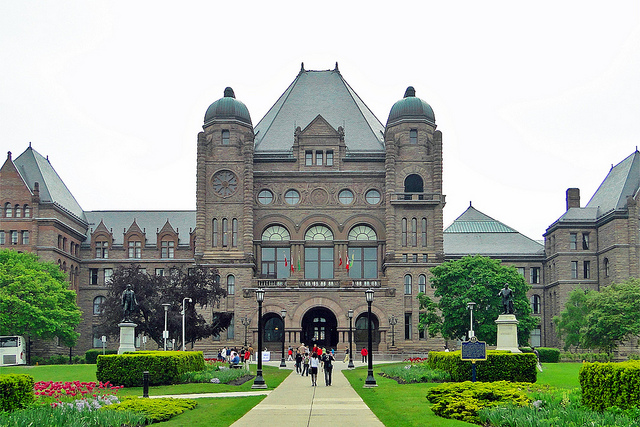Each quarter, Ontario’s Ministry of Finance releases an update on Ontario’s economic accounts.
The numbers for the first quarter of 2014 were released in the heat of summer, and on the same day that the provincial budget was re-introduced. As a result, it went largely unnoticed.
A closer look tells us this update deserves more attention than it got.
Here are some highlights (or lowlights as the case may be):
1. Real GDP grew by 0.1 per cent (0.6 per cent annualized) in the first quarter of 2014. This isn’t heartening news. That’s 0.2 percentage points lower than the first quarter of 2013 and in fact, lower than the first quarter of 2011, before the Ontario government went into austerity mode with spending cuts and wage freezes.
2. Household spending — which any government in austerity mode hopes will carry the day when it comes to GDP growth — grew by only 0.2 per cent.
That’s half the growth rate of the first quarter of 2013. This number masks the fact that spending on durables (like furniture and cars) and semi-durables (such as clothing and footwear) actually declined by 1.2 and 1.4 per cent, respectively.
The slight increase came as the result of a dramatic increase in spending on non-durables, such as fuel — particularly natural gas — that was needed to heat homes to get through the harsh winter. Not exactly a sign that consumer spending is an economic driver to be relied upon.
3. Government spending shrank by 0.2 per cent. That’s what we call austerity. It represents a decrease in public spending that’s on par with the decline in 2012 — the first year austerity was pursued in Ontario.
4. Exports, imports, and residential construction were also down as well — by 1.4, 1.4 and 1.1 per cent, respectively. Another dismal sign.
5. Finally, in an era where everyone looks to the private sector to revive an ailing economy, it’s the public sector that continues to drive a significant share of economic growth: the health and education sector held the second largest share of nominal GDP in 2013. It’s part of the reason why Ontario cannot afford any cuts to these two vital sectors.
So what can we make of these five indicators? Austerity isn’t achieving what its architects intended.
Budget 2014 projected an annual GDP growth rate of 2.1 per cent this year. This low rate was already the subject of much debate. When the projection was first released in April, commentators wondered: “Will slow growth lead to declining government revenues in Ontario?” But even if we accept a future of slower economic growth, at 0.1 per cent, Ontario did not perform well enough in the first quarter of 2014 to meet even the slowest growth predictions.
So what was supposed to get us to the 2.1 per cent growth rate? Household spending, business investment and trade — all items that were either tepid or negative in the first quarter of 2014.
The 2013 economic statement reported that household spending is projected to be the largest contributor to GDP growth through 2016. Government spending, or the cuts to it as the case may be, are projected to be a net drag on economic growth.
And don’t think that Wynne’s budget was all spending and no cuts. As the update points out, government spending declined 0.2 per cent in the first quarter of this year, following a 0.0 per cent increase in 2013. Ontario’s per capita program spending is now the lowest in Canada.
There is an alternative. Government spending can be just as much a contributor to GDP as any other category (net trade, household spending, business investment, etc.) — especially with the low interest rate conditions, that we’re experiencing currently.
We’ve said it before at the CCPA-Ontario and we’ll say it again: austerity is doing more harm than good. Time to look at those alternatives.
Kaylie Tiessen is an economist with the Ontario Office of the Canadian Centre for Policy Alternatives (CCPA Ontario). Follow her on Twitter @KaylieTiessen
Photo: Maia C/flickr



